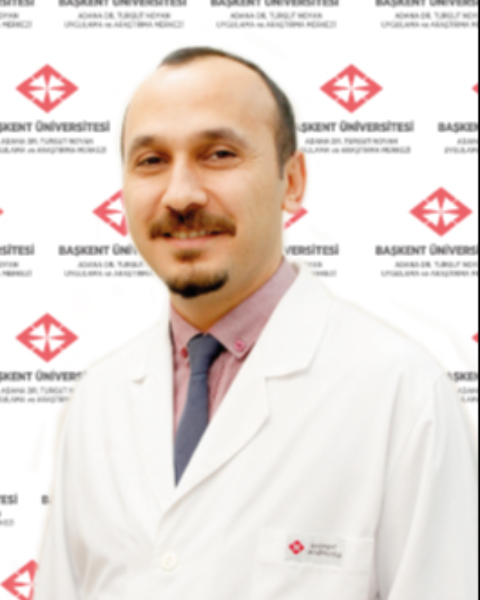PQA 08 - PQA 08 Genitourinary Cancer, Patient Safety, and Nursing/Supportive Care Poster Q&A
3178 - The Effect of Age on Clinicopathological Features and Treatment Outcomes of Patients Receiving Definitive Radiotherapy for Localized Prostate Cancer
Tuesday, October 1, 2024
2:30 PM - 3:45 PM ET
Location: Hall C
Screen: 10

Ozan Cem Guler, MD
Baskent University
Adana, Adana
Presenter(s)
O. C. Guler1, A. Elmali Dogan2, M. N. Yavuz2, and H. C. Onal3; 1Baskent University Faculty of Medicine, Adana Dr Turgut Noyan Research and Treatment Center, Adana, Turkey, 2Baskent University Faculty of Medicine, Department of Radiation Oncology, Ankara, Turkey, 3Department of Radiation Oncology, Baskent University Faculty of Medicine, Ankara, Turkey
Purpose/Objective(s): To investigate the effect of age (<70 and =70 years) on treatment outcomes in prostate cancer (PCa) patients receiving definitive radiotherapy (RT). Materials/
Methods: The prognostic factors for biochemical disease-free survival (bDFS), prostate cancer-specific survival (PCSS), overall survival (OS), and treatment-related toxicity in were determined through univariable and multivariable analyses. The two age groups were also compared in terms of acute and late grade = 2 genitourinary (GU) and gastrointestinal (GI) toxicities, the predictors of which were determined through logistic regression analysis.
Results: Of the 1,328 patients, 715 (53.8%) and 613 (46.2%) were aged <70 and =70 years, respectively. Median follow-up time was 84.5 months. No significant differences in the 7-year bDFS (86.3% vs. 86.8%) and PCSS rates (92.9% vs. 93.3%) were found between the =70 and <70 age groups. The multivariable analysis showed that advanced clinical T stage, high ISUP grade, and high-risk disease were the independent predictors of poor bDFS and PCSS. Another prognostic factor for bDFS was lymph node metastasis. The 7-year OS rate was significantly higher in the <70 age group than in its counterpart (82.5% vs. 70.0%). In the multivariable analysis, age =70 years, any cardiac event at diagnosis, advanced stage, higher ISUP grade, and non-utilization of the simultaneous integrated boost technique were identified as the negative factors for OS. Furthermore, diabetes and TUR-P were determined as independent factors that predict higher late grade = 2 GU toxicity. No significant predictors of late grade = 2 GI toxicity were identified.
Conclusion: Definitive RT is a safe and effective treatment for patients with localized PCa no matter their age. Although patients over 70 have higher risk factors and comorbidities, their bDFS, PCSS, and toxicities were comparable to those of patients aged <70 years.
Purpose/Objective(s): To investigate the effect of age (<70 and =70 years) on treatment outcomes in prostate cancer (PCa) patients receiving definitive radiotherapy (RT). Materials/
Methods: The prognostic factors for biochemical disease-free survival (bDFS), prostate cancer-specific survival (PCSS), overall survival (OS), and treatment-related toxicity in were determined through univariable and multivariable analyses. The two age groups were also compared in terms of acute and late grade = 2 genitourinary (GU) and gastrointestinal (GI) toxicities, the predictors of which were determined through logistic regression analysis.
Results: Of the 1,328 patients, 715 (53.8%) and 613 (46.2%) were aged <70 and =70 years, respectively. Median follow-up time was 84.5 months. No significant differences in the 7-year bDFS (86.3% vs. 86.8%) and PCSS rates (92.9% vs. 93.3%) were found between the =70 and <70 age groups. The multivariable analysis showed that advanced clinical T stage, high ISUP grade, and high-risk disease were the independent predictors of poor bDFS and PCSS. Another prognostic factor for bDFS was lymph node metastasis. The 7-year OS rate was significantly higher in the <70 age group than in its counterpart (82.5% vs. 70.0%). In the multivariable analysis, age =70 years, any cardiac event at diagnosis, advanced stage, higher ISUP grade, and non-utilization of the simultaneous integrated boost technique were identified as the negative factors for OS. Furthermore, diabetes and TUR-P were determined as independent factors that predict higher late grade = 2 GU toxicity. No significant predictors of late grade = 2 GI toxicity were identified.
Conclusion: Definitive RT is a safe and effective treatment for patients with localized PCa no matter their age. Although patients over 70 have higher risk factors and comorbidities, their bDFS, PCSS, and toxicities were comparable to those of patients aged <70 years.
